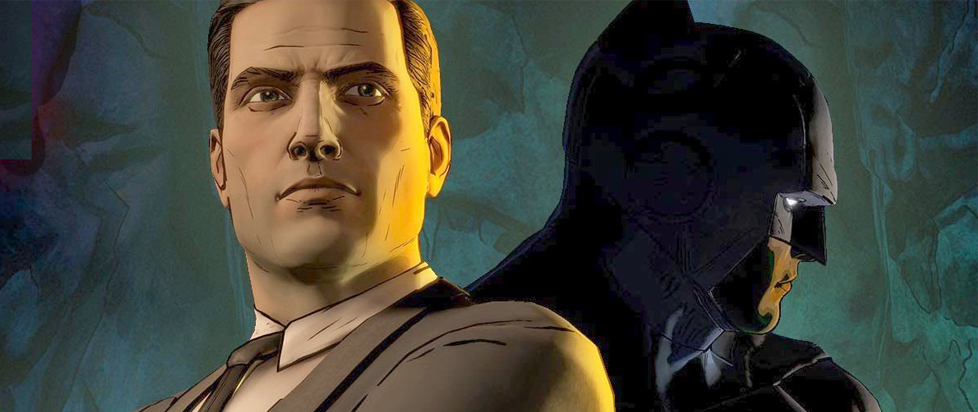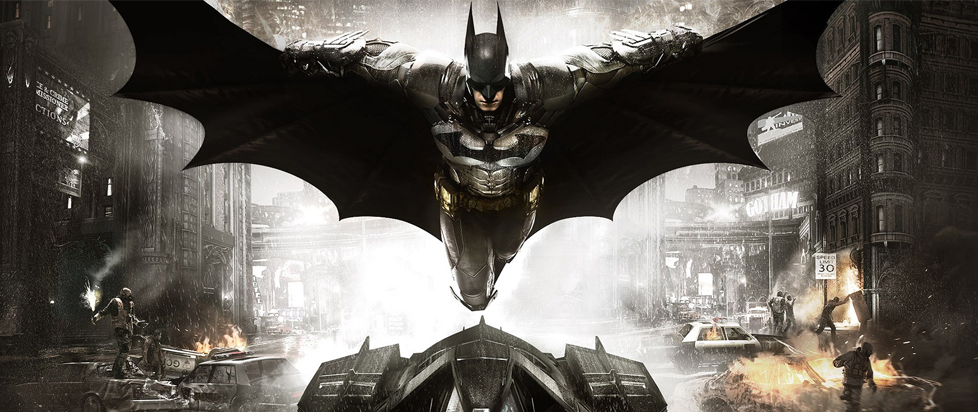
20 Theses on Batman
 Gavin Craig has a lot of games on his shelf that he’s never played. Backlog is his attempt to correct that.
Gavin Craig has a lot of games on his shelf that he’s never played. Backlog is his attempt to correct that.
———
This column is a reprint from Unwinnable Monthly #95. If you like what you see, grab the magazine for less than ten dollars, or subscribe and get all future magazines for half price.
———
0.
Between August and September 2016, Telltale games released an episodic Batman videogame. This August, Telltale released the first episode of a second Batman “season,” titled The Enemy Within, which I have not played and will not be referring to in the remainder of this piece.
1.
The character of the Batman first appeared in 1939 in Detective Comics #27, in which he thwarts a rather esoteric scheme for a (secret) silent partner in a chemical firm to murder his associates and take control of the company. Batman punches the malefactor into a vat of acid where, somewhat surprisingly given later lore, he dies and almost certainly does not become the Joker.
2.
Batman, somewhat famously, wears purple gloves in this first appearance. He never wears them again. (At least not until contemporary flashbacks.)
3.
In his fifth and sixth appearances, Detective Comics #31 and #32, Batman fights a character who is revealed to be a vampire. Batman kills the vampire by melting down a statute while the vampire sleeps in order to make silver bullets and then shooting him. In Batman #1, the Batman destroys a truck full of men mutated into giants by Dr. Strange by shooting it with a machine gun attached to the Batplane. Batman’s aversion to guns (and killing) comes later.
4.
The story that Bruce Wayne became the Batman after witnessing his parents’ murder as a child also appears for the first time in 1939, in Detective Comics #33.
5.
If Bruce Wayne was, say, eight when his parents died, and if this was “some fifteen years ago,” as established in Detective Comics #33, then the Batman is 23 years old in 1939, which means that he was born in 1916, survived the 1918 flu epidemic, would have been prime draft age in 1940, and could possibly still be alive today at 101, even if that seems somewhat unlikely given the physical cost of being the Batman.
6.
As the center of the DC Comics shared universe, and the (ostensible) lynchpin of a multi-billion dollar franchise, the writing of the current Batman comic book is something of a committee project. (That is, a more-or-less freelance writer pitches storylines to fit within the overall direction and major cross-title story events determined by editorial executives.)
7.
If anything, film, TV and merchandise incarnations of the Batman can be even more creatively restricted, if less by the character’s somewhat dusty three-quarters-of-a-century published history, then all the more strongly by the high-risk/high-revenue demands of the mass-media blockbuster market.
8.
Which is why, on occasion, a small story in a small(ish) medium like videogames can be an outstanding thing.
9.
It may be a bit of a spoiler, but one of the major twists in the Telltale Batman serial game is that Bruce Wayne’s parents, Thomas and Martha, were not upstanding pillars of the Gotham community as they are normally portrayed.
[pullquote] Portraying the Batman as somewhat unbalanced psychologically has a long tradition. [/pullquote]
10.
Telltale’s game is not the first Batman story to play with the idea that Bruce Wayne’s parents may have had a sinister past — see, for example, Grant Morrison’s Simon Hurt/ “Thomas Wayne” character from his 2008 “Batman R.I.P.” storyline — but Telltale’s story is unusual in that it settles on the Waynes’ criminal activities as established fact.
11.
Portraying the Batman as somewhat unbalanced psychologically has a long tradition, but Bruce Wayne’s childhood before the death of his parents is almost universally treated as having been idyllic, thus increasing the tragedy and impact of their murder. Bruce is frequently treated as an intense child with a demanding sense of justice, but throwing the nature of his childhood (and the source of the family wealth) into question strikes at the heart of the character.
12.
The Batman is, after all, a vigilante, who may deal increasingly with the existential threat of mass homicide by a maniacal and preternatural gallery of rogues, but whose sense of justice is built at its core on a belief in the efficacy of assault and battery as a crime-fighting tool.
13.
The myth of the Batman is that good can be done by skulking on rooftops in a distinctive outfit and swooping down to punch individual evildoers in the face. Sociologically, this is at best quaint and at worst jackbooted thuggery.
14.
Contrary to the imagination of Gotham as the embodiment of the crime-ridden metropolis, we are in fact, on the whole, reasonably safe from strangers. According to the FBI, in 2011 roughly 54% of murder victims knew their murderer, which nearly 25% of the time was a family member.
15.
We fear the Joker and Ra’s al Ghul, Ted Bundy and Osama bin Laden, and it is true that we are never entirely safe from anything. There could be an attack, random or planned. We could be struck by a car directed by malevolence, or negligence or nothing at all. The rains fall, the wind blows. The ground moves and rocks fall from the sky. But we are most likely to die behind the wheel ourselves, or staring into a face we have known and loved.
16.
At the heart of the Batman is the declaration that questions of justice are fundamentally incompatible with questions of the law. There is truth in this, but it is also a cop-out.
[pullquote]Batman is a criminal. He has always been a criminal….this criminality is a not a badge of honor, even if the Batman is not the greatest criminal in Gotham City.[/pullquote]
17.
Justice cannot ever be encompassed by the law. Justice is a question of relationships, and law is a concession to the fact that our relations are frequently unjust because we are frequently unjust. There is a violence inherent in the law, but it is a violence intended to mitigate the inherent violence of lawlessness. It is a violence that must always be considered and reconsidered, tempered wherever possible, and in which we are all implicated and must remain so in order for there to be any possibility of justice. Justice can never be a fist in the dark, and the law must never be allowed to pretend that it is.
18.
Batman is a criminal. As per Frank Miller, he has always been a criminal. Contra Miller, this criminality is a not a badge of honor, even if the Batman is not the greatest criminal in Gotham City.
19.
The greatest criminal in Gotham City is Jim Gordon, the good man, the man of the law, beyond corruption, who has given up on the law and deputized a criminal as the agent of a lawless state.
20.
I am and remain fascinated by the Batman, the man of justice whose extraordinary capacities are presented as the best extension of our own human capability. The Batman is a fine story, a fine demigod in a fine set of myths. Like all heroes of myth, however, he cannot save us. He is not even really on our side.
———
Gavin Craig is a writer and critic who lives outside of Washington, D.C. Follow him on Twitter @CraigGav.




